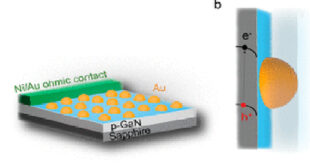Applied Surface Science, Volume 331, 2015, Pages 140–149.
Liu1, W. Jian1, J.Y. Wang1, S. Hofmann2, K. Shimizu3
- Department of Physics, Shantou University, 243 Daxue Road, Shantou, 515063 Guangdong, China.
- Max Planck Institute for Intelligent Systems (formerly MPI for Metals Research), Heisenbergstrasse 3, D-70569 Stuttgart, Germany.
- University Chemical Laboratory, Keio University, 4-1-1 Hiyoshi, Yokohama 223-8521, Japan.
Abstract
High-resolution depth profiles of a thiourea (CH4N2S) molecular monolayer on a copper substrate obtained by radio frequency glow discharge optical emission spectroscopy (rf-GDOES) are quantified by the Mixing-Roughness-Information depth (MRI) model. Based on the molecular structure of the self-assembled thiourea layer, the measured intensity-sputtering time profiles of N, S, C and Cu are fitted to the MRI model results with an appropriate depth resolution function. The sputtering rate is determined accordingly, using two different approaches based on constant sputtering rate and on composition dependent sputtering rate. While the first approach requires an additional background for a fairly acceptable solution, the approach using a newly developed multielement dependent sputtering rate results in a complete and consistent reconstruction of all the measured elemental depth profiles. It is demonstrated that for depth profiling of the first few monolayers with rf-GDOES, the depth resolution Δz can be as low as 0.5 nm, which is of the order of the theoretical limit.
 Advances in Engineering Advances in Engineering features breaking research judged by Advances in Engineering advisory team to be of key importance in the Engineering field. Papers are selected from over 10,000 published each week from most peer reviewed journals.
Advances in Engineering Advances in Engineering features breaking research judged by Advances in Engineering advisory team to be of key importance in the Engineering field. Papers are selected from over 10,000 published each week from most peer reviewed journals.


